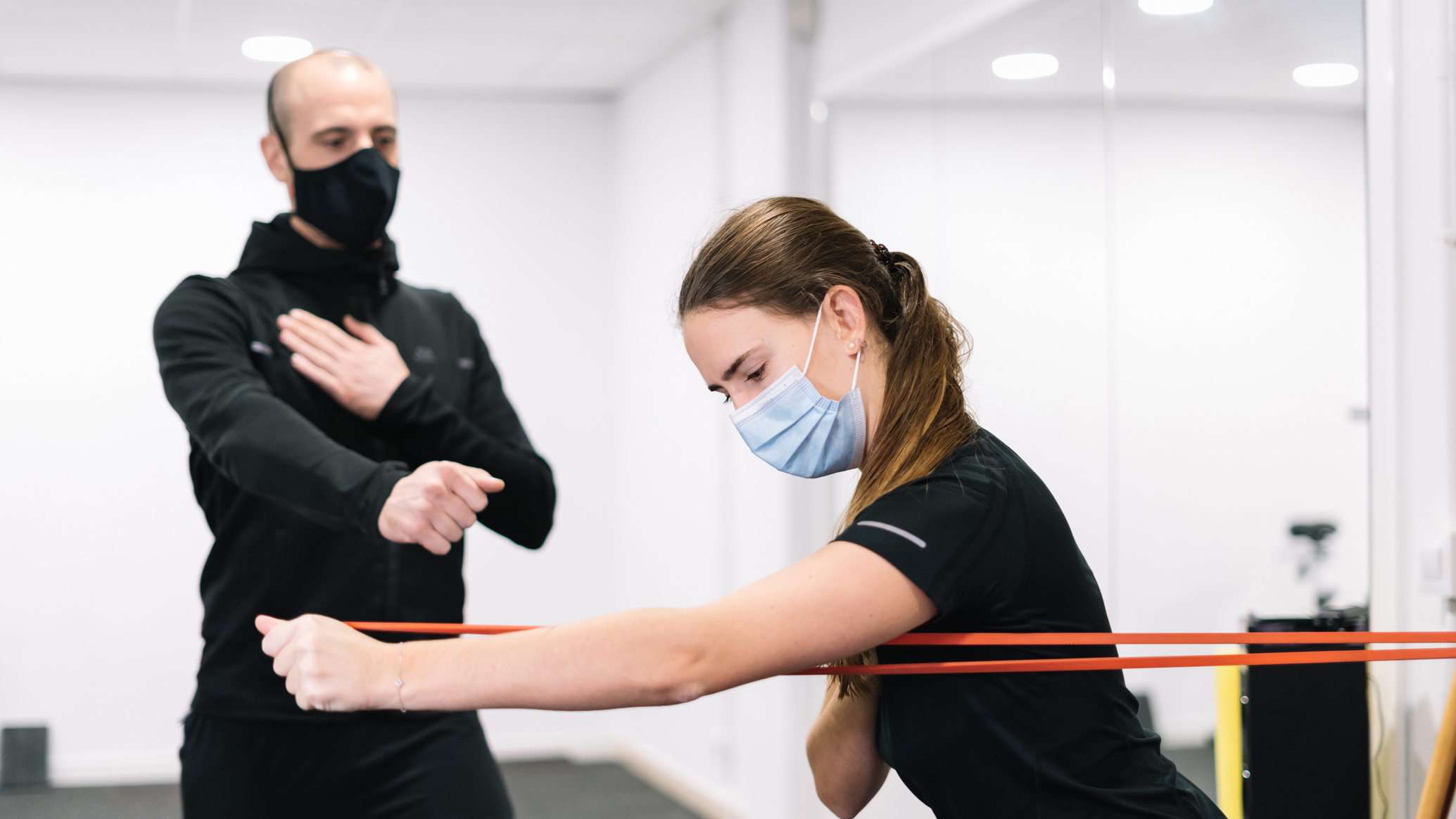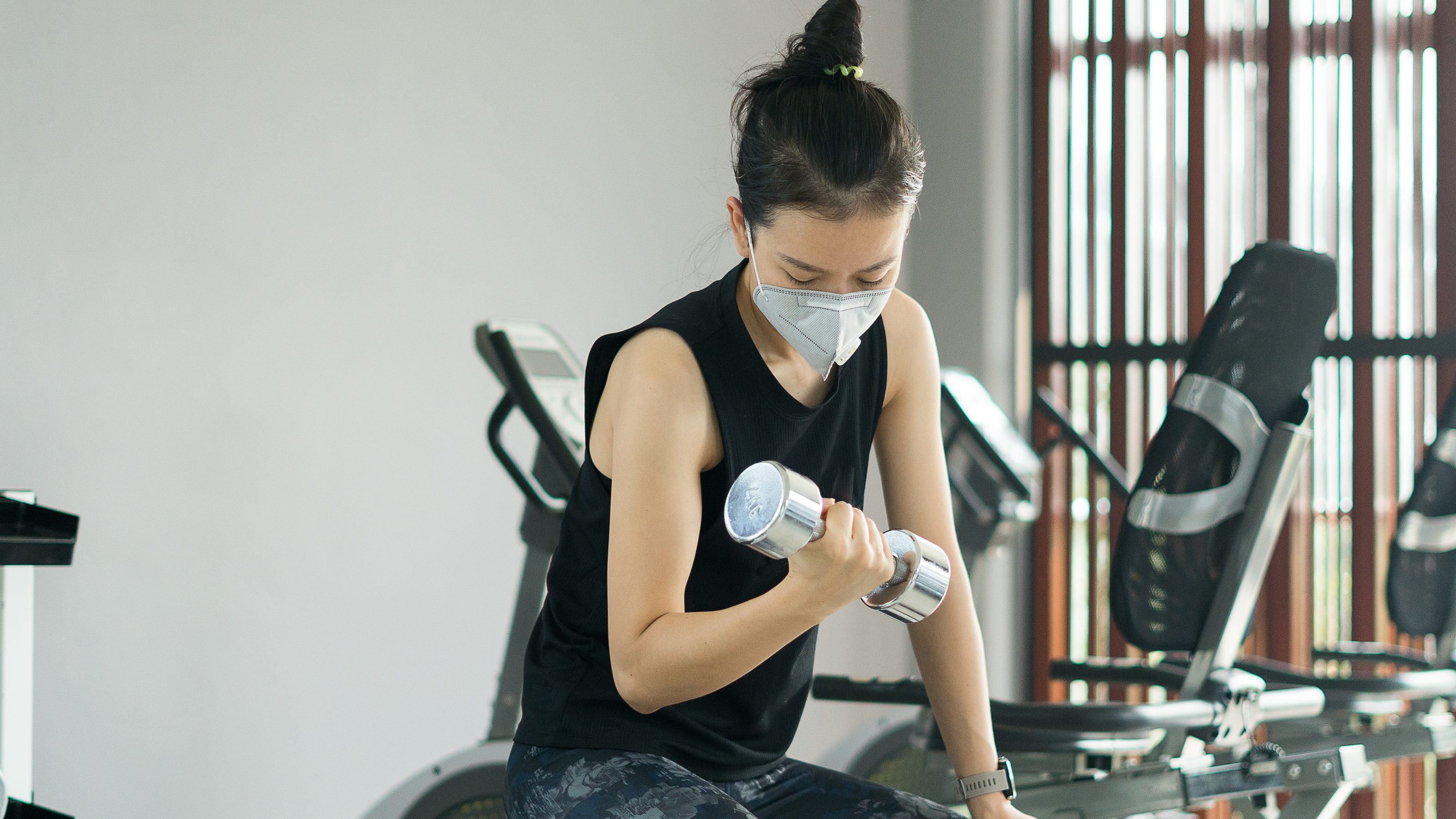This fitness expert shares his tips on getting back to the gym after lockdown
Don't overdo it, recovery is key, and keep an eye on your nutrition – here's the post-COVID fitness tips you need


Now that the coronavirus vaccine programme is being rolled out across the world, gyms, leisure centres, climbing walls, tennis courts and other sports venues are beginning the process of reopening safely, great news for fitness fans everywhere.
While many people use lockdown as an excuse to get back into home fitness, the mental stresses and being stuck at home has also lead many people into a sedentary lifestyle. The reopening of gyms and leisure centres offer an avenue for everyone to get back into fitness.
However, after so long away from the gym, don't make the mistake of going too hard, too soon trying to replicate the routines you were doing before the pandemic hit. Daine Mitchell, top fitness coach and Maximuscle ambassador, shares his tips for getting back to pre-COVID fitness.

Back to the gym tip #1: Start slow
"in mind that you probably haven’t used heavy weights or been able to load your movements for quite a while now," says Mitchell. "This means you will have to build your strength back up gradually to prevent injury and a week of DOMS. Start at around 40-60% of your previous weights for the first couple of weeks before increasing weight and volume."
Overtraining, or trying to lift too much, are some of the main cause of resistance-training related injuries. A new study from Georgetown University researchers found "common upper extremity injuries in resistance training athletes include muscle strains, ligament sprains... While each injury is unique in its specific anatomic location and mechanism, each is preventable with proper exercise technique, safety and maintenance of muscle balance."
First day back in the weights room? Deload and start slower, building your strength back up the right way. It's a marathon, not a sprint.
Back to the gym tip #2: Focus on the fundamentals
"Your fitness level may not be the same as previously, but don’t worry, you won’t be the only one. Start off slowly and keep things simple. Pick basic movements and fundamental movement patterns to start off with before trying anything too complex."
Start your week with achievable workout ideas, health tips and wellbeing advice in your inbox.
Mitchell recommends using basic routines before going too far into anything over-complicated. If you've not trained in a while, your form won't be as good during many of these movements as it was previously, so trying very complex supersets or lots of different movements might increase your risk of injury. Basic, linear movements are your friends until your confidence and ability has been built back up.
A post shared by Daine Mitchell (@daine.mitchell)
A photo posted by on
Back to the gym tip #3: Plan your workout
"Consistency with training will lead to results and motivation," says Mitchell. "Start by planning your workouts ahead of time. Making a plan and knowing what you are going to do, will make all the difference and prevent you from getting bored, frustrated, or leaving after only a couple of sets."
Remember to take the previous advice into account when creating your new plan, and reduce the amount of effort you spent at the gym post-COVID in case of injury. If you fail at your old routine, you might leave feeling burned out and spent rather than energised for the next session.
"Plan training sessions that you enjoy and that are fun. When you get back into the swing of things and your training mojo returns, you can then mix things up again."
Back to the gym tip #4: Focus on nutrition
"Fuelling your sessions will be important especially if your lockdown training hasn’t been as intense. Making sure that you eat right pre and post-workout will guarantee a great training session. It will also assist with recovery afterwards so you can return back to the gym sooner with minimal muscle soreness.
"Aim to consume a protein and carbohydrate meal or snack 60-90 mins before training and a recovery shake within 30 mins afterwards," says Mitchell. Not sure how to get your protein fix? Any lean meat such as chicken, fish or supplements such as our best protein powder for weight loss or best protein powder for women would be ideal.

Back to the gym tip #5: Recovery is key
"Warming up and cooling down is another simple thing that we can do which will be super beneficial to our training and recovery. Many of us may not have been as active during lockdown as we were previously, we may also have spent extended times seated compared to usual. This could lead to tighter muscles and restricted mobility.
"Ensuring we warm up correctly, will be key to getting blood flow around the body and preventing any injuries that could keep us from training even longer!"
Our how to warm up guide and our list of stretching exercises are excellent ways to get started warming up before your gym session in order to mitigate injury. On your days off training, consider trying forms of active recovery (gentle, low-impact exercises like swimming or yoga) which can help you recover faster.
20 minutes of an active-recovery exercise is ideal, according to the journal PLOS One, so grab your best yoga mat and get to it – yoga's gentle stretches, movements and isometric holds will increase your range of motion, guarding against injury, and encourage blood to flow around your muscles to help them recover.
Matt Evans is an experienced health and fitness journalist and is currently Fitness and Wellbeing Editor at TechRadar, covering all things exercise and nutrition on Fit&Well's tech-focused sister site. Matt originally discovered exercise through martial arts: he holds a black belt in Karate and remains a keen runner, gym-goer, and infrequent yogi. His top fitness tip? Stretch.
